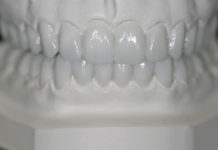
When I first heard Dr. Dick Barnes speak many years ago, I remember him saying the phrase, “Who’s the doctor, doctor?” At that time, I did not truly understand the concepts of diagnosis and treatment planning, let alone the execution of complex procedures and the sequencing of the process. Patients would ask me questions about how I was going do the treatment, and they would especially inquire about the cost of treatment. Such questions were daunting and sometimes difficult to answer.
During that time in my career, I felt overwhelmed. I found myself relying on my training from school, which had not really prepared me to be more than a tooth mechanic. Usually, I ended up simplifying my planned treatment to make the patient happy.
Later on, I realized that such compromises did not truly serve the patient. Instead, I should have viewed my role as one who could help the patient in terms of his or her oral health and, more importantly, with their quality of life.
It took a few years to learn how not to listen to my personal “gremlins,” or inner demons, which tried to tell me that making patients happy involved them not paying much for dental treatment.
Eventually, I experienced a paradigm shift about who should be directing treatment. Was it the patient? Was it my team telling me I shouldn’t be doing this kind of work? Was it the insurance company telling me what kind of work to do? Was it my spouse or my accountant? “Who’s the doctor, doctor?” became something I would ask myself to make sure I was staying true to my training as an expert and on track with the patient’s complete oral health in mind.
A Comprehensive Philosophy
After graduating from dental school, most new dentists aren’t at a skill level to diagnose dental issues comprehensively. New dentists typically don’t yet know enough beyond the minimum standard of care, so sometimes more complex issues are inadvertently missed. In retrospect, the phrase,“You don’t know what you don’t know,” was appropriate for me.
Comprehensive treatment means not just looking at the “trees,” but looking at the “forest through the trees.” That happens by interviewing your patients better, understanding their stories better, and putting such information into a context that fits your patients’ needs and desires, as well as their budgets.
Comprehensive means everything—looking at every angle. Some doctors are content being drill-and-fill dentists. But is that what’s best for their patients? I would not want to go to that type of a dentist and then find out later in life that I had lost my molars without the dentist having told me how important it was for me to keep them in order to eat and chew in my later years.
Comprehensive dentistry means applying dentistry at a deeper level—not just being a dentist who does an MO composite. It’s about understanding the functionality of the jaw and its muscles, and the teeth and how they are interrelated. It means learning to look at soft tissue differently and how to look at the integration of implants.
Comprehensive dentistry is also about looking at every age group with their particular needs, including young children (and examining the critical development of both their teeth and their airways), young adults, middle-aged patients, and more mature patients. I hear a lot of regrets from my senior patients who wish that they had taken better care of their oral health throughout their lifetime.
The Comprehensive Exam
Health History
A comprehensive exam starts out with universal categories, beginning with the patient’s health history. How does the patient’s health affect possible issues with their teeth? Maybe the patient takes medications such as blood thinners or bisphosphonates. A veritable host of issues can affect final treatment, and the way in which doctors help their patients depends on a proper understanding of how a patient’s health issues are interconnected.
It’s important to know and understand a patient’s health history and to document it so that the outcome of the dentistry is successful. Dentists are not tooth mechanics. We’re physicians of the oral cavity, and as such, we should do everything we can to help patients keep their teeth for a lifetime.
Dental Exam
The next step is a dental examination. The doctor checks the oral structures and the dental structures, looking at them both from a clinical perspective and from the perspective of the patient. For a truly comprehensive look, dentists need adjuncts, or other sources of information. One of those adjuncts is, of course, dental X-rays. With digital dental X-rays, dentists can see hard tissue structures and determine if the tissue is healthy or not. X-rays allow dentists to find things that could be detrimental to the patient, such as cancers or abnormal tumors.
Additionally, dentists have the capability to see X-rays in a three-dimensional way with a cone beam computed tomography (CBCT) scan. This instrument allows dentists to look further and examine not only the jaw joints from a different perspective, but also the sinuses.
The cone beam also helps dentists see the back of the throat and identify issues that may be related to sleep apnea. With this information, dentists can make the proper referrals to an M.D. for a sleep analysis, or to an oral surgeon for a biopsy, or to an ear, nose, and throat (ENT) doctor. That’s taking a comprehensive exam to a new level.
3D imaging can offer better oral care for patients, and it also increases the “wow” factor. Patients have repeatedly told me, “I’ve never had such a thorough exam in my whole life. I thought teeth were just teeth.”
Supporting Structures
A comprehensive exam includes another category—the soft tissues of the mouth (the gingiva) and the supporting structures of the bone, and how they are working with the teeth. For this process, I recommend an intraoral evaluation of the patient, either with photography or a video capture of the dentition.
Occlusion/T-Scan®
The final category for a comprehensive exam is the jaw joint and the patient’s occlusion. How has the occlusion held up over time? Has it deteriorated? Has it been stable? Does the patient have structural popping or clicking in the joint? After examining all of these areas, if doctors need more information, they can go further. This may involve biometric types of evaluations, like using a T-Scan® to check bite force and timing.
All of these categories contribute to making a proper and thorough diagnosis. As dentists do this type of exam more and more, it becomes second nature. The dentist’s job is to take all the pieces to the puzzle of the comprehensive analysis—exam, X-rays, intraoral scans, T-Scan®, etc.—and formulate a complete treatment plan for the patient.
The comprehensive doctor is responsible to know and understand several modalities of treatment in dentistry, including the repositioning of teeth, oral surgery, endodontic treatments, soft tissue management, and sleep-disorder treatments.
The Role of Team Members
Team members play an important role in assisting with a comprehensive diagnosis. Simply put, the dentist can’t do it all. He or she needs a team to gather a patient’s information, and the information must be clear—it can’t be halfway done. For example, it can’t be half of a scan. It has to be detailed and done the same way every time.
In my office, the way we greet new patients is always the same. The pattern is choreographed. The verbiage is choreographed. The examination is choreographed. We always ask patients their wants and desires.
For existing patients, we update their medical history and their dental issues with X-rays and thorough charting of their gingival tissues. We observe the teeth in the posterior for wear and deterioration, instead of waiting for things to get to the point of fracturing or cracking.
Then we bring the patient back for a diagnostic review. We explain in further detail what to expect, and also what we predict may happen in the future. And then we give them the choice to intervene now or later, making sure they understand that if it’s later, the time and cost will likely be greater.
It’s important for dental team members to understand why the comprehensive approach is being taken. Dental team members shouldn’t feel like the only goal of the practice is to sell cosmetic procedures or a full mouth reconstruction. The goal of the entire team should be to help people maintain their teeth for a lifetime.
Team members have an integral part in describing to patients why the doctor is making treatment recommendations. They can explain everything to patients in layman’s terms. They can also share stories of what the practice has done for other patients, and what a difference it makes when the doctor spends that kind of time with patients and provides this type of care. If the front office is not skillfully trained on what it means to be a comprehensive dental practice, the process can break down.
Everyone needs to understand his or her unique role and how it relates to providing the finest care. For example, if a hygienist talks to the patient about potential issues and how treatment can help him or her to eat and chew, and then the dentist walks into the operatory and says almost verbatim what the hygienist just said, then they’re congruent with their beliefs and values. It’s a confirmation to the patient and communicates a message of confidence.
Remember that team members should always know “who’s the doctor.” In a converse example, if a hygienist tells patients that they don’t really need a certain procedure, it can sabotage what the doctor is trying to do. The situation must be addressed immediately or it can cause additional problems down the road. That’s being the doctor, doctor. A team member’s personal beliefs shouldn’t come into play.
Being the doctor means being a leader and establishing your beliefs and mission. The leader has to have his or her finger on the pulse of the practice. That includes looking at the business numbers for the health of the practice.
Communication with Patients
The doctor can undermine the importance of the treatment plan by immediately giving in when a patient says they don’t want it. Early in my career, I went through this as well. But I learned that when I’m honest with the patient, and I approach them as Dr. Dick Barnes suggests (“eye-to-eye and knee-to-knee”), then I can explain things to them in terminology that they understand so that they can choose what’s best.
Often patients have concerns that doctors can address. For example, a patient might say that he or she doesn’t want an implant. If you dig a little deeper, they may tell you that they don’t want an implant because they had a friend who had one, and it was a terrible experience. The implant became infected and fell out.
Knowing the root of the concern, you can assure the patient that it’s not normal for a thing like that to happen. Then you can explain about the procedures that you follow in terms of sterilization, and the protocols that are in place to prevent those kinds of complications from occurring. Simple reassurance may be all a patient needs.
What is Comprehensive?
Comprehensive treatment is not always the most expensive, highest-end dentistry. If I had a patient who was 78 years old and immune compromised, and he or she came in wanting an implant, providing one might not necessarily be advisable. In his or her situation, an implant could create more issues, whereas a bridge could work extremely well.
In the process of meeting with that patient and gathering the information, I might say, “It looks like there are a lot of things here that I want to spend time going over with you.” Then I would end it by saying, “I would hate to miss anything. And it would be a disservice for me to even try to guesstimate some things, because there are some things I want to take a hard look at. I’m going to have you come back after I study all this.”
When the patient returns, I could explain the treatment to him or her in a way that they would understand. This gives me time to come up with a treatment strategy for helping patients so they can enjoy their teeth for the rest of their lives.
That’s what comprehensive dentistry is really all about—using the best instruments at our disposal, understanding the best modalities of treatment available, being a leader of the team, and learning to communicate the best treatment effectively to patients. Together, it adds up to quality care for all patients, and it helps them keep their oral health in great condition throughout their lifetime.









